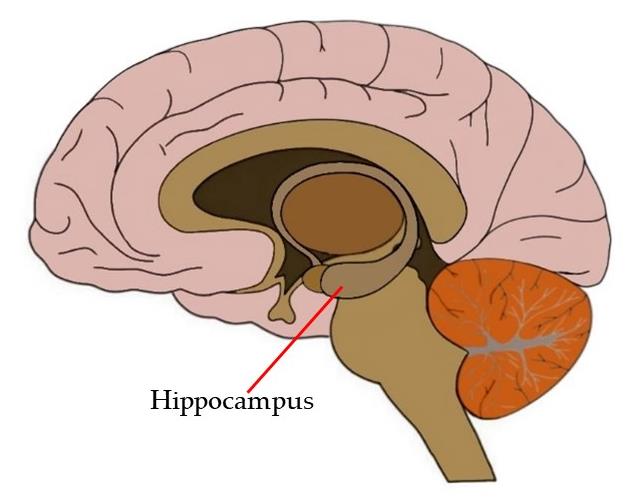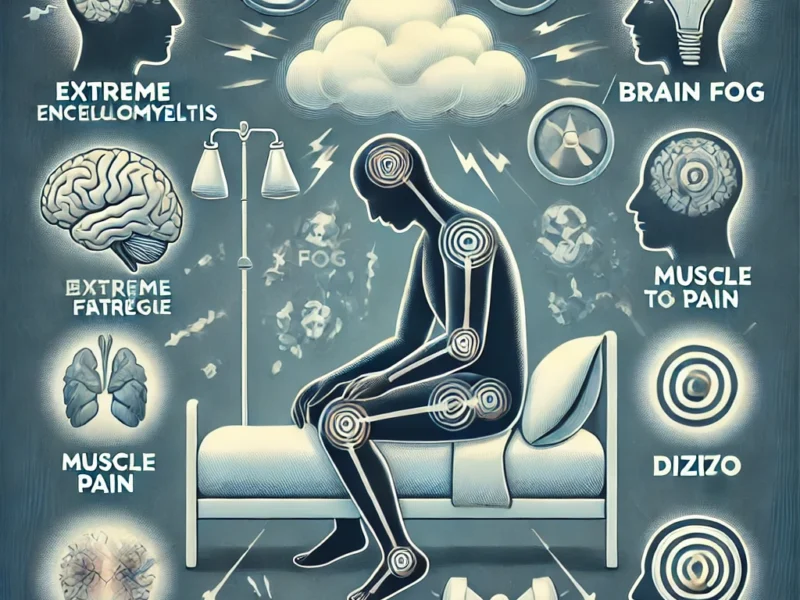
The Hippocampus: A Comprehensive Scientific Overview
Introduction to the Hippocampus
The hippocampus, a critical part of the brain’s limbic system, is essential for memory formation, spatial navigation, and emotional regulation. This intricate structure has been extensively studied due to its pivotal role in various cognitive functions and its susceptibility to damage from different neurological conditions.
Structure and Location of the Hippocampus
The hippocampus is a small, curved formation located within the medial temporal lobe of the brain, resembling the shape of a seahorse. It consists of two halves, one in each hemisphere of the brain, connected by the fornix. The primary regions of the hippocampus include the dentate gyrus, CA1, CA2, CA3, and the subiculum. These areas work in concert to process and encode different types of information.
Functions of the Hippocampus
Memory Formation and Consolidation
The hippocampus plays a crucial role in converting short-term memories into long-term memories, a process known as memory consolidation. Long-term potentiation (LTP), a mechanism where repeated stimulation strengthens synaptic connections, is fundamental to this process. LTP enhances synaptic communication, making it easier for neurons to transmit signals, thereby facilitating learning and memory.
Spatial Navigation
The hippocampus is integral to spatial memory and navigation. It helps individuals orient themselves in space and remember locations and routes. Research involving London taxi drivers demonstrated that the posterior hippocampus is particularly involved in storing spatial representations of the environment.
Emotional Regulation
The hippocampus is also involved in emotional processing and regulation. It interacts with the amygdala to modulate emotional responses and is implicated in the formation of emotional memories. Dysfunction in this region can contribute to mood disorders such as depression and anxiety.
Impact of Lifestyle Factors on the Hippocampus
Exercise and Physical Activity
Regular physical activity is beneficial for hippocampal health. Exercise has been shown to increase the size of the hippocampus and improve memory and cognitive function. Aerobic exercise, in particular, promotes neurogenesis (the growth of new neurons) in the dentate gyrus.
Diet and Nutrition
A diet rich in antioxidants, omega-3 fatty acids, and other nutrients supports hippocampal function. Foods like blueberries, fatty fish, and nuts provide essential nutrients that protect against oxidative stress and inflammation, which can damage the hippocampus.
Sleep
Quality sleep is vital for hippocampal health and memory consolidation. During sleep, the hippocampus replays recent experiences to the cortex, reinforcing memory pathways. Chronic sleep deprivation can impair this process, leading to memory deficits and cognitive decline.
Stress and Mental Health
Chronic stress negatively impacts the hippocampus, reducing its size and impairing its function. High levels of cortisol, the stress hormone, can damage hippocampal neurons and inhibit neurogenesis. Mental health conditions like depression and PTSD are associated with reduced hippocampal volume.
Damage to the Hippocampus
Causes of Hippocampal Damage
Hippocampal damage can result from various conditions, including traumatic brain injury, stroke, Alzheimer’s disease, seizures, and ischemia. Such damage can significantly impair memory formation and spatial navigation.
Symptoms of Hippocampal Damage
Signs of hippocampal damage include difficulty forming new memories, problems with spatial orientation, and cognitive dysfunction. Individuals may experience mood disturbances, such as depression and anxiety, and have trouble recalling long-term memories.
Research and Treatment
Advancements in neuroimaging techniques, such as MRI and PET scans, have improved our understanding of hippocampal damage and its effects. Treatments focus on mitigating damage and enhancing hippocampal function through lifestyle interventions, pharmacotherapy, and emerging techniques like gene therapy and stem cell research.
Keeping the Hippocampus Healthy
Exercise Regularly
Regular aerobic exercise can protect the hippocampus from age-related decline and promote neurogenesis. Activities like walking, swimming, and cycling are particularly beneficial.
Maintain a Healthy Diet
A balanced diet rich in antioxidants, omega-3 fatty acids, and vitamins can support hippocampal health. Incorporating foods like fruits, vegetables, fish, and nuts into your diet can provide essential nutrients.
Manage Stress
Finding effective ways to manage stress, such as through mindfulness, meditation, and relaxation techniques, can help protect the hippocampus from the negative effects of chronic stress.
Ensure Adequate Sleep
Prioritizing quality sleep is crucial for hippocampal function and overall cognitive health. Aim for 7-9 hours of sleep per night to support memory consolidation and cognitive performance.
Mental Stimulation
Engaging in mentally stimulating activities, such as puzzles, reading, and learning new skills, can enhance hippocampal function and promote cognitive resilience.
Memory Formation and Storage in the Hippocampus: The Role of Long-Term Potentiation (LTP)
The hippocampus, a critical structure within the brain’s medial temporal lobe, plays a fundamental role in the formation and storage of memories. One of the primary mechanisms underlying these processes is Long-Term Potentiation (LTP), a long-lasting enhancement in signal transmission between two neurons that results from their synchronous stimulation.
Overview of Long-Term Potentiation (LTP)
LTP is a process that strengthens synaptic connections, making it easier for neurons to communicate. This mechanism is believed to be the cellular basis for learning and memory. Here’s a detailed look at how LTP works and its significance in memory formation:
- Synaptic Transmission:
- Baseline Transmission: Under normal conditions, neurotransmitters are released from the presynaptic neuron and bind to receptors on the postsynaptic neuron, generating a postsynaptic potential.
- Induction of LTP: When high-frequency stimulation (tetanic stimulation) is applied to the presynaptic neuron, a significant increase in synaptic strength occurs. This is the initiation phase of LTP.
- Molecular Mechanisms of LTP:
- Glutamate Release: During high-frequency stimulation, the neurotransmitter glutamate is released in large quantities from the presynaptic neuron.
- Receptor Activation: Glutamate binds to two types of receptors on the postsynaptic neuron—AMPA receptors and NMDA receptors. AMPA receptors respond to glutamate by allowing sodium (Na+) ions into the neuron, depolarizing the postsynaptic membrane.
- Calcium Influx: The depolarization removes the magnesium (Mg2+) block from NMDA receptors, allowing calcium (Ca2+) ions to enter the postsynaptic neuron.
- Intracellular Signaling: The influx of calcium activates several signaling pathways within the postsynaptic neuron, including the activation of protein kinases such as CaMKII (Calcium/Calmodulin-dependent protein kinase II) and PKA (Protein Kinase A).
- AMPA Receptor Phosphorylation: These kinases phosphorylate AMPA receptors, increasing their conductance, and promoting the insertion of additional AMPA receptors into the postsynaptic membrane. This enhances the synaptic response to glutamate.
- Structural Changes:
- Synaptic Growth: Over time, LTP can lead to structural changes at the synapse, including the growth of new dendritic spines (small protrusions on dendrites where synapses form). These structural modifications make the synaptic connection more robust and persistent.
- Gene Expression: LTP also involves changes in gene expression, leading to the production of proteins that support synaptic growth and maintenance.
The Role of LTP in Memory Formation
LTP enhances the efficiency of synaptic transmission, which is crucial for the formation and storage of memories. Here’s how it contributes to different types of memory:
- Declarative Memory:
- Formation: The repeated activation of synaptic connections within the hippocampus actively forms declarative memories (facts and events). LTP strengthens these connections, encoding the memory.
- Consolidation: Over time, the repeated synaptic activation and LTP actively consolidate these memories and transfer them to the cortex for long-term storage.
- Spatial Memory:
- Navigation: The hippocampus is critical for spatial memory and navigation. LTP in hippocampal place cells (neurons that activate in specific locations) helps create and stabilize spatial maps of the environment.
- Recall: When navigating, the reactivation of these strengthened synapses allows for the recall of spatial information, aiding in orientation and route planning.
- Emotional Memory:
- Integration with Amygdala: The hippocampus works with the amygdala to form and retrieve emotional memories. LTP in these interconnected pathways ensures that emotional experiences are strongly encoded and can be vividly recalled.
Conclusion
The hippocampus is a vital brain structure essential for memory formation, spatial navigation, and emotional regulation. Understanding the factors that affect its health and function can help in maintaining cognitive abilities and preventing neurological disorders. Through lifestyle choices like regular exercise, a balanced diet, stress management, and adequate sleep, individuals can support their hippocampal health and overall brain function.
External Links
- Neuroscience Research Article on Memory and the Hippocampus
- Health Benefits of Aerobic Exercise
- Nutritional Guidelines for Brain Health
These resources provide additional insights and guidelines for maintaining hippocampal health and supporting cognitive function through various lifestyle interventions.

